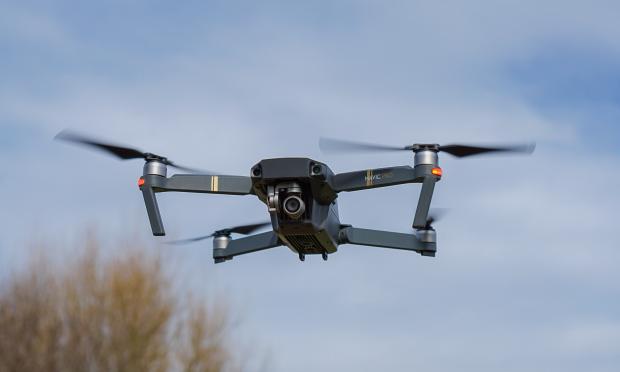The war in Ukraine continues with unabated intensity with the Russian Armed Forces attacking in waves, breaking through the defence lines of the Ukrainians, who after months of unsuccessful large-scale offensive resulting in thousands of dead soldiers and the loss of many critical weapons systems, have steadily shifted to a defensive mode with some sporadic counter-attacks.
The lack of "Russian" drones in Ukraine and Putin's assurances on Russian-Chinese relations
However, the Russian Armed Forces despite their successes have to face a serious problem from within, which is the lack of drones, since despite Putin's denial, Chinese restrictions and Russian bureaucracy have indeed brought about a decrease in their production.
On December 14, 2023, Russian President Vladimir Putin participated in a "Direct Line" event during which he answered questions from journalists and ordinary citizens.
Responding to a question from Xinhua news agency about Russia's relations with the People's Republic of China (PRC), the President praised an "unprecedented" level of close relations, noting the two countries' cooperation in "military, economic and humanitarian fields."
Earlier in November, Putin had mentioned, "Russia's high-tech military cooperation with China".
Chinese reports on Beijing-Moscow relations
However, China's reports on the level of cooperation between the two countries vary.
In February 2022, before the Russian attack on Ukraine, Chinese officials were enthusiastic about Russia-China relations, stating:
"Exchanges and interaction between the two sides in the field of technology and high-tech equipment have become an important element of Sino-Russian military-technical cooperation," said Chinese Ambassador to Russia Zhang Hanhui.
At the time, the day before the war in Ukraine began, the statement seemed to imply that China had agreed to supply arms to Russia.
However, a month later, in March 2022, China's ambassador to the United States, Qin Gang, denied that China had supplied weapons that could be used in Russia's war with Ukraine.
The use of civilian Mavic drones in the war in Ukraine
However, civilian unmanned aerial vehicles (UAVs), such as the Mavic series,could be modified for military use and deployed for reconnaissance purposes.
Pro-Russian TG channels and YouTube streams are full of fundraising campaigns for civilian UAVs or drones for Russian troops.
The US Department of Defense noted that, from March 2022 to early 2023, Chinese companies exported more than $12 million worth of drones and related components to Russia.
Olgerd Semyonov's posts on his personal Telegram channels also reminded his followers that the Mavic UAVs purchased with their donations were used in hostilities in the "Holy War".
The video accompanying the post shows how Mavic drones were used to set up artillery shots.
China's "change of tack" on the issue of drones
On 1 September 2023 , in a context of increasing US control over military supply chains, the PRC introduced restrictions on the export of certain types of drones and some of their components.
The US imposes sanctions
The restrictions mainly covered UAV engines, laser sensors and communications equipment of drones weighing more than four kilograms or other devices capable of carrying and launching missiles, or models that allow such modifications.
Obtaining a purchase license, according to estimates, may take up to a year for Russian companies, provided they are able to demonstrate that such UAVs will not be used in hostilities.
On 28 September, the Office of Foreign Assets Control (OFAC), a division of the US Treasury Department, imposed restrictions on an Iranian company, Pishgam Electronic Safeh; a Hong Kong company, Hong Kong Himark; the Turkish companies Madencilik Turizm Sanayi Ve Ticaret Anonim Sirketi and Ic Ve Dis Ticaret INSAAT Lojistik Sanayi Limited Sirketi; and Farhad Ghaedi Goods Wholesalers of the United Arab Emirates.
However, Russian buyers of drones manufactured in the PRC faced similar problems as early as 2022, at a time of increasing demand.
At the same time, a Chinese high-tech company, Da-Jiang Innovations (known as DJI, which translates to Great Frontier Innovations), withdrew from the market.
The Russians are building up a stockpile of drone parts
According to the CEO of Russian company RuDrones, Dmitry Datsykov, by August 2023 Russian drone manufacturers were building up a stockpile of UAV parts, such as cameras, sensors, engines, and devices to counter enemy UAVs.
In addition, the Russian Ministry of Industry and Trade (Minpromtorg), warned in advance UAV manufacturers of the need to increase stocks, stating, on September 18:
"Russia's Ministry of Industry and Trade has not yet received requests from manufacturers regarding problems with the export of UAVs and their components."
The Russian "by pass"
It would be difficult, if not impossible, to completely cut off UAV refueling routes or grey imports, even assuming they comply with existing restrictions.
According to research conducted by Radio Svoboda journalists, Moscow is even able to obtain NATO-manufactured UAV components.
The purchases were made through a network of companies, some of which were registered in Kazakhstan and Kyrgyzstan.
The Head of the Novorossiya Assistance Coordination Center, Alexander Lyubimov, in an interview with IA Regnum media said that Russian military drones, not just civilian models, contain many Chinese-made components:
"Engines , blades, gearboxes and the UAV 'body' are made in Russia, but the electronics are Chinese and nothing can be done about it yet."
The Kremlin is also investing in developing software for UAVs. Indeed, a Center of Developmental Capability for UAV software engineering was created under the auspices of the Ministry of Digital Development, Communications and Media.
The Russian state plans to spend around USD 9 billion on the project.
The Russian bureaucracy
The existing problem with drones discussed above is compounded by the Russian bureaucracy.
It seems that in order to obtain the right to build UAVs through the Russian Ministry of Defence, a company not only has to file a lot of documents, prove that it has the appropriate certificate , but also has to bear financial responsibility for the vehicle.
Considering the ever-increasing price of their construction and the fact that probably in a short time it will be easily destroyed by the Ukrainians during operations, many companies avoid the complicated process required for their construction.
Account
From the above it can be seen that despite Russia's efforts to by pass US sanctions, they have managed to reduce the ability to import drones components from China and other countries, resulting in a shortage of production of "Russian" drones in combat operations in Ukraine.
This shortage is exacerbated by the Russian bureaucracy.
In conclusion, given the fact that the "Russian" drones played a major role in the impairment of Ukrainian air defences and the destruction of Ukrainian infrastructure centres, their absence will enable the reconstitution of the Ukrainian Ground Forces, which, combined with the bad weather conditions due to the winter, may limit the scope of Russian military successes on the war front.
In conclusion, we would say that the end of the war in Ukraine is slow in coming.




